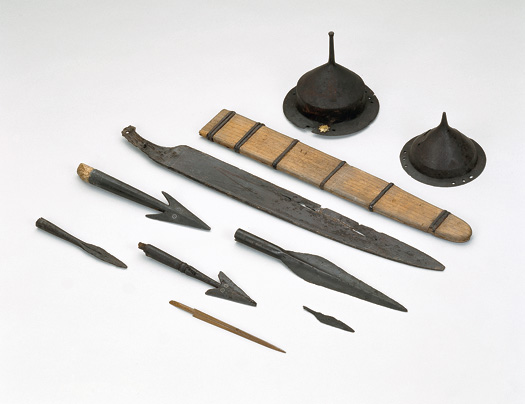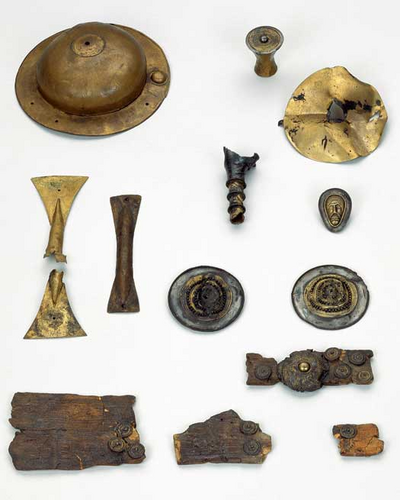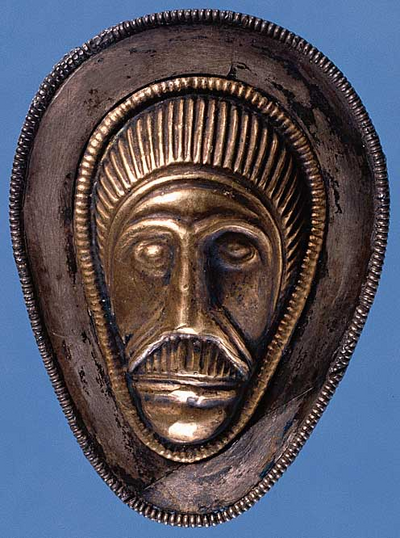Armies and Soldiers of the Iron Age
The weapon offerings provides a rare opportunity to watch Iron Age soldiers and commanders over their shoulder. When weapons in contemporary graves tells about the individual soldier equipment, then weapon deposits as the one in Vimose reveal the whole army structure and organization.
The victims in Vimose shows that the armies at home in the first two centuries AD consisted of smaller parts of squad from different areas in southern Scandinavia, northern Germany and Poland. They may reflect shifting alliances between great men and princes with their own armies. In some cases, you also had to buy the professional soldiers. The main weapon was the lance, which was a close combat weapon. The sword, however, was not nearly as common, and probably it was only the officers who held a sword.
In the 3th and 4th century the weapons were more standardized. Lances, spears and shields were so uniformed that there seems to have been an overall control of weapon production. In the 3th century AD bowmen became a part of the Army's infantry. The officers were usually mounted and had finer weapons and horse equipment with bronze fittings. The leader also held scabbards, belts and shields, which was decorated with fine silver and gold plate bracket.



